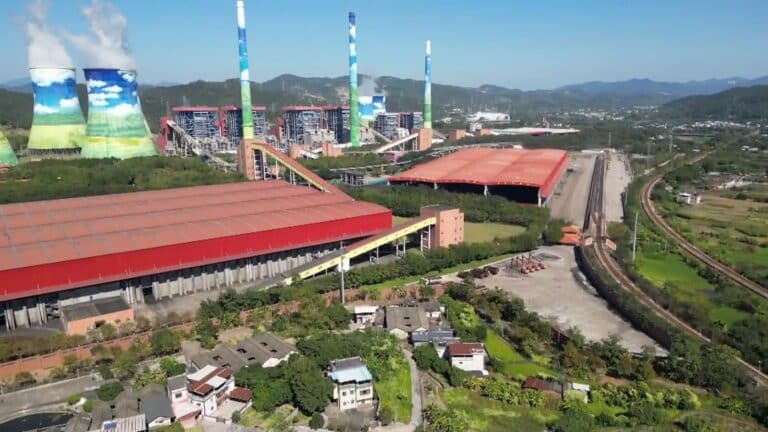China’s coal-fired power plants may not always be visually unappealing. Some are situated in picturesque locations surrounded by green hills and lush farmland, with chimneys painted to depict blue skies and idyllic scenes. However, China’s reliance on coal remains a polluting industry, and it is the local communities that suffer the consequences. In Huangxi village, located in the southern Guangdong province, residents live in the shadow of one such power plant. The road leading to the coal yard is constantly filled with trucks carrying the dusty black fuel. The air is thick with soot, prompting those who can afford to leave to do so. Chen Yingwen, a resident in her 60s, showcases the soot that accumulates in her home, explaining that it quickly becomes dirty again after cleaning. From her rooftop, she has a clear view of the power plant and describes how it has negatively impacted the community. Dirty water from the plant contaminates the vegetables, rendering them inedible. Despite China’s commitment to move away from coal and reduce emissions, the coal plant in Huangxi is just one example of many that have recently expanded. Greenpeace’s analysis of government documents reveals that China commissioned more new coal-fired power projects in the first three months of 2023 than it did in all of 2021. Guangdong province, in particular, approved more projects than any other region. Dongguan, a city further up the coast, provides insight into why the expansion is happening. The city is home to numerous small-scale manufacturers that rely heavily on energy. Guangdong’s warm climate also makes it susceptible to climate shocks, such as heatwaves and droughts, which lead to power cuts. Experts believe these challenges have played a significant role in the commissioning of new coal projects for “energy security.” However, not everyone is opposed to these developments. Manufacturers like Zhen Haiming view the expansion positively, as it ensures electricity supply. Guangdong’s coal primarily comes from the northern provinces, highlighting the dichotomy in China’s energy sector. While China is a leader in renewable energy investment, with over 50% of its energy capacity being green, coal still accounts for 56% of its energy consumption. The reliance on coal stems from infrastructure challenges, such as an outdated power grid that hampers the distribution of renewable energy from the north to the south. Additionally, the need for reliable and safe storage solutions for renewable energy remains a significant challenge. Envision Energy, a global company specializing in green technology, recognizes the fluctuating nature of wind power generation and emphasizes the importance of storage systems for reliable energy supply. These challenges are not unique to China, as other countries also face fragmented energy grids and insufficient storage solutions. The COP28 summit will likely focus on China due to its scale and emissions. However, the investment required for transitioning to renewable energy comes with political risks, making fossil fuels the easier option for now.


